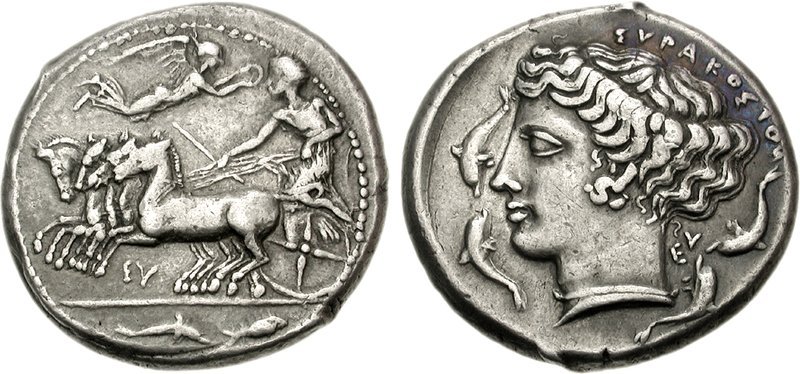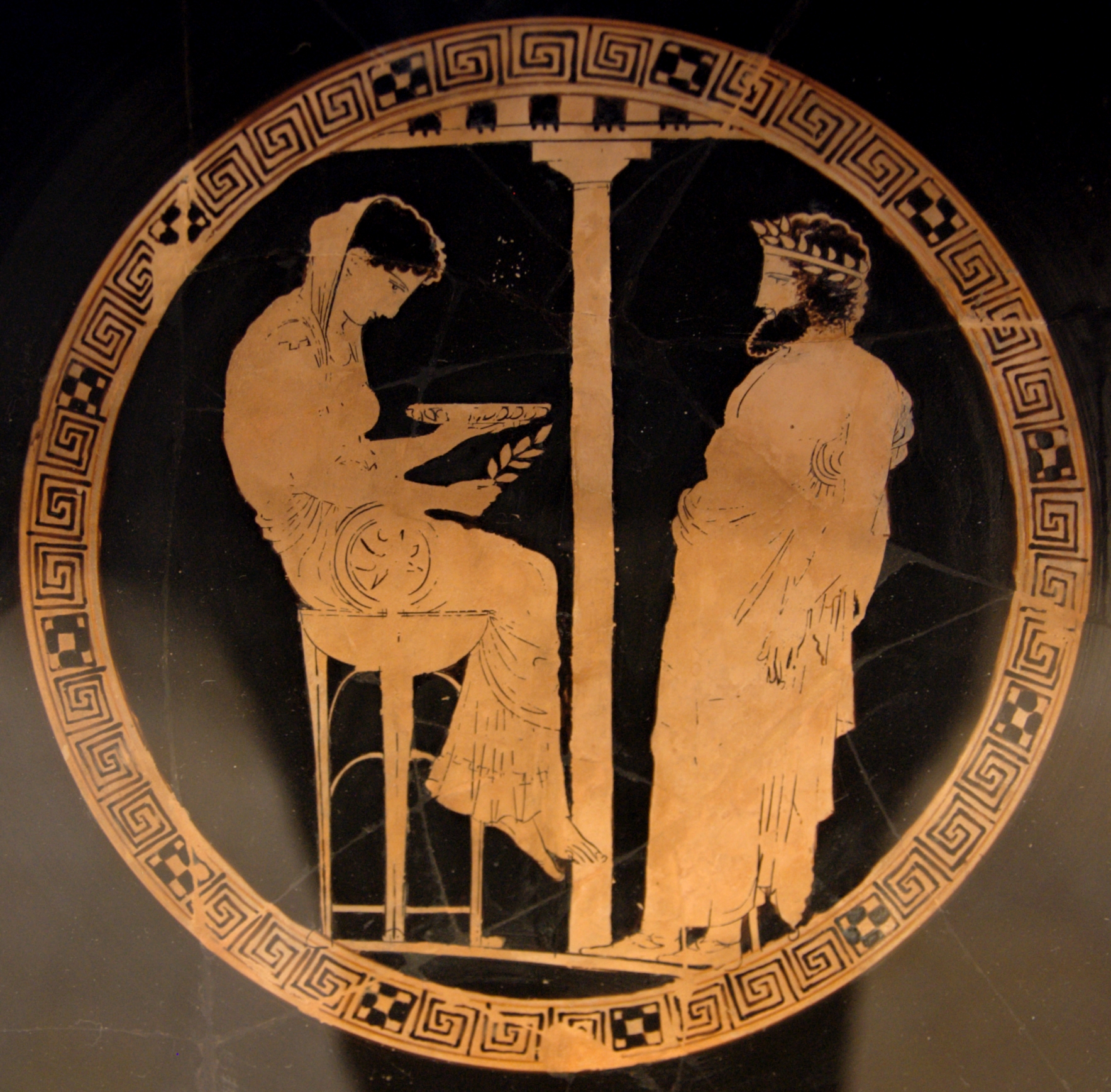Our famous Decadrachm

In the 5th century Syracuse was the most important Greek city in the Mediterranean sea. In 416 b.C the historic conflict between Athens and Syracuse was put to an end after several sea and land battles with the block of the Athenian fleet in the great harbour and then with its complete destruction. It was the most important success in the history of the Sicilian city and the government decided to coin a special decadrachm coin to celebrate the victory.
It is commonly called “head of Arethusa” because it represents the figure of the nymph surrounded by two or four dolphins. They stand for the oracle in Delphi where the sun god Apollo founded his temple after a journey which took him all over Greece in search of a suitable site. “And whereas I first, in the misty sea, sprung aboard the swift ship in the guise of a dolphin, therefore pray to me as Apollo Delphinus” (from Homer’s Hymn to Apollo). According to the ancient Greek historian, Pausania, the oracle in Delphi suggested the Corinthian Archias where to found Syracuse in 734 BC. The priestess said: ‘Go into that island where the river Alpheus mixes his waters with the fair Arethusa.’

On the other side of the coin a quadriga, a four horses chariot, is represented whose auriga is crowned by a Nike carrying a wreath of laurel in her hands. This coin had the value of ten drachma and it was created by Euainetos.
The 5th century was also a time of urbanistic innovation for Syracuse. The building of structures like the Greek theatre, the Latomia with its so called “Ear of Dionysius” took place in this period. The Greek Theatre was a cultural centre where people met to see comedies or tragedies written by famous dramatist and playwrights such as Aeschylus, Sophocles and Euripides, Menander, Aristophanes. It was restored in the III century. Despite the fact it is a historical monument, people can still see the performances which represent the ancient myths in early summer period.
In the same archeological area there is another important symbol of the Greek culture: the so called Ear of Dionysius, as the famous 16th century painter Caravaggio named it. This cave was built in 250 b.C. circa and it was used as a prison. Its particular shape awards it to amplify the sound. The legend says that this acoustic quality was used in the past by the tyrannum Dionysius to hear the voices of his prisoners. The Archeological Complex of Neapolis is one of the most beautiful attractions in Syracuse.
Authors: Lelio Carpinteri and Leonardo Rubera - IV E liceo scientifico